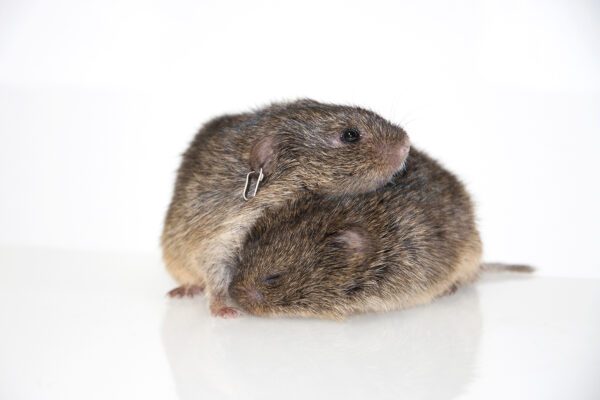AUSTIN, Texas — How does sex relate to lasting love? To answer that question, scientists have long studied a small Midwestern rodent called the prairie vole, one of the few mammals known to form long-term, monogamous relationships.
A team of researchers including Steven Phelps of The University of Texas at Austin has created the first brainwide map of regions that are active in prairie voles during mating and pair bonding. The researchers found that bonding voles experience a storm of brain activity distributed across 68 distinct brain regions that make up seven brainwide circuits. The brain activity correlates with three stages of behavior: mating, bonding and the emergence of a stable, enduring bond.
Most of these brain regions the researchers identified were not previously associated with bonding, so the map reveals new places to look in the human brain to understand how we form and maintain close relationships.
Earlier studies concluded that male and female brains often use fundamentally different mechanisms to produce the same behaviors, such as mating and nurturing offspring. But in this study, bonding males and females had nearly identical patterns of brain activity.
“That was a surprise,” said Phelps, a professor of integrative biology and senior author of the new study in the journal eLife. “Hormones like testosterone, estrogen and progesterone are important for sexual, aggressive and parental behaviors, so the prevailing hypothesis was that brain activity during mating and bonding would also be different between the sexes.”
Compared with humans, prairie voles have whirlwind courtships. Within half an hour of being together, a male and female begin to mate, and they will do so repeatedly, often many times an hour. Within a day, their amorousness will lead the pair to form a bond that can last a lifetime. Bonded pairs will groom each other, console each other when stressed, defend their shared territory and rear their young together.
The researchers were able to pinpoint with high resolution which brain cells were active in vole brains at various points over the course of the process that leads to and includes bonding. This is the first time such a method has been applied to prairie voles. By studying more than 200 prairie voles across multiple times during mating and bonding, the researchers produced an unprecedented and foundational data set.
The strongest predictor of activity across the 68 brain regions that the researchers identified surprised them. It was male ejaculation, suggesting the experience elicits a profound emotional state — and not only in the affected males. Females, too, had more bonding-related brain activity with males who reached that milestone.
“The brain and behavior data suggest that both sexes may be having orgasm-like responses, and these ‘orgasms’ coordinate the formation of a bond,” Phelps said. “If true, it would imply that orgasms can serve as a means to promote connection, as has long been suggested in humans.”
In addition to Phelps, the study’s co-authors are Morgan Gustison, a former postdoctoral researcher of UT Austin now of the University of Western Ontario; Rodrigo Muñoz-Castañeda of Weill Cornell Medical College; and Pavel Osten of Cold Spring Harbor Laboratory. The National Institutes of Health funded the research.




